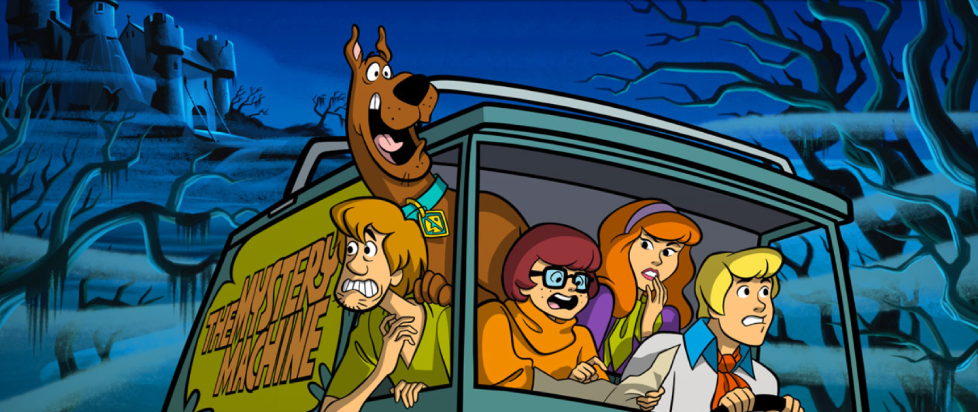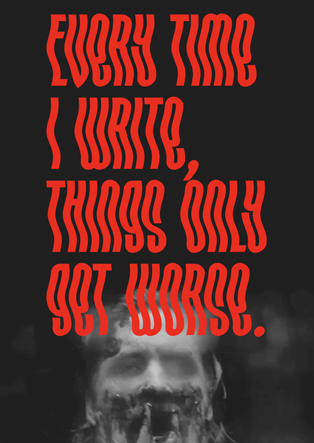
Wacky Hijinks: Similarities and Differences in Scooby-Doo: The Board Game
I see board games in the store and they always look so cool and then I buy them and bring them home, I’m so excited to open them, and then I play them, like, twice… This column is dedicated to the love of games for those of us whose eyes may be bigger than our stomachs when it comes to playing, and the joy that we can all take from games, even if we don’t play them very often.
———
For the last couple of months, we’ve been on a kick of old dark houses and creepy castles, so let’s keep it rolling with a return trip to the property that is probably most synonymous with both. Way back in the first few months of this column, I argued that Scooby-Doo: Betrayal at Mystery Mansion was something more than just two great tastes that taste great together. Since then, a new Scooby-Doo board game has hit shelves, this one from column regular CMON.
The directly-titled Scooby-Doo: The Board Game was launched via a Kickstarter, where it shared space with games for Looney Tunes and Teen Titans Go. The version I played didn’t come from the Kickstarter, however. It’s the one you can get over the counter at your friendly local game shop. What’s the difference? Mainly that the Kickstarter featured painted figures and unlocked a host of additional monsters for the game, including classic Scooby-Doo villains like the Spooky Space Kook, the Black Knight, and the Zombie.
In the core game, the figures come unpainted, the Mystery Machine is papercraft rather than a plastic miniature, and the only three monsters are the Green Ghost, the Creeper, and the Clown Ghost. It is perhaps ironic that neither version features Charlie the Robot, since Funland is one of the main locations featured on the game board.

It is also ironic that, in many ways, Scooby-Doo: The Board Game feels less like Scooby-Doo and more like a board game than Betrayal at Mystery Mansion, which was already repurposing the mechanics of another game and yet managed, in so doing, to create an almost perfect evocation of a Scooby-Doo episode.
What the game still gets very right is the artwork. From the simple miniatures, which recreate the monsters and Mystery Inc. gang in classic poses, to the board itself, which boasts the look of one of the painted backdrops from the original series. Even the box, which, when opened, showcases the Mystery Inc. gang running while being surveilled by creepy eyes. (The Kickstarter version came in a glow-in-the-dark box, with cover artwork featuring the Mystery Machine surrounded by the various villains – something I’m a little sad I didn’t get.)
As for how the game plays, it more closely resembles Ravensburger’s modern classic Horrified than Betrayal at Mystery Mansion. You start out by picking a monster, either at random or based on which one you’d like to go up against. The monster has special rules that change the game albeit, in the case of the three that come in the core box at least, only very slightly. From there, characters attempt to move around the board, avoiding the monster and gathering resources to complete traps. Once all the traps are completed, the monster is captured and the players win.
The core mechanics – resource-gathering to complete specific combinations – is almost identical to Horrified, even while plenty of other differences remain. The way movement is determined is by drawing cards, for both the players and the monster. And while the monsters have unique rules, they mostly all function the same way, scaring away visitors from locations and causing trouble for the Mystery Inc. crew.
In Horrified, the way to defeat each monster was contingent upon the monster itself. In Scooby-Doo, it’s contingent upon the trap cards that you put into play. In both cases, however, it isn’t always the same from game to game, though it does mean that changing monsters in Horrified changes the flow of the game a lot more than it does in Scooby-Doo. And perhaps that’s thematic after all, given that every Scooby-Doo monster is ultimately just a greedy human in a mask.
There are also elements present here from another CMON game that I’ve covered previously, the very good and very fun Marvel United series. As in that game, there’s a certain amount of cooperation between players that goes into which cards you choose and play, though it doesn’t have that game’s ingenious central conceit.
The replacing of different kinds of tokens will feel familiar to players of Marvel United, though, as will the necessity to gather certain resources needed to clear cards. Perhaps more pointedly, as in that game, your own cards are not just what enable you to move and act, they are also your life meter, for all intents and purposes, and encountering the monster too often can quickly drain you of them, leading to one of the game’s several lose conditions.

Besides looking very charming, the game does a good job of promoting teamwork. Scooby-Doo: The Board Game is full co-op, and while it may not nail the teamwork aspect as well as the aforementioned Marvel United, it really does take everyone working together and in tandem to come out on top. There are lots of ways to lose, after all, and only one way to win, and it will take everybody combining their efforts in strategic ways to make that happen.
Though this is billed as a family game, recommended ages are 10 and up for good reason. There’s a lot of planning that goes into what is otherwise a fairly straightforward game. Fortunately, the play has built-in difficulty options to help mitigate frustrations for younger players.
Even though this is a CMON product, it is not crammed to the gills with plastic – unless you got the Kickstarter version, that is. There are minis for all five Mystery Inc. members and three monsters in the regular box. Despite this, the price point on Scooby-Doo: The Board Game is a bit on the high side for a game of its size and scope, with a going rate of around $60. By comparison, the MSRP of Betrayal at Mystery Mansion is less than $40, and you can usually get it for half that, making it probably the better bet, if you’re only going to have one Scooby-Doo game lying around.
———
Orrin Grey is a writer, editor, game designer, and amateur film scholar who loves to write about monsters, movies, and monster movies. He’s the author of several spooky books, including How to See Ghosts & Other Figments. You can find him online at orringrey.com.





